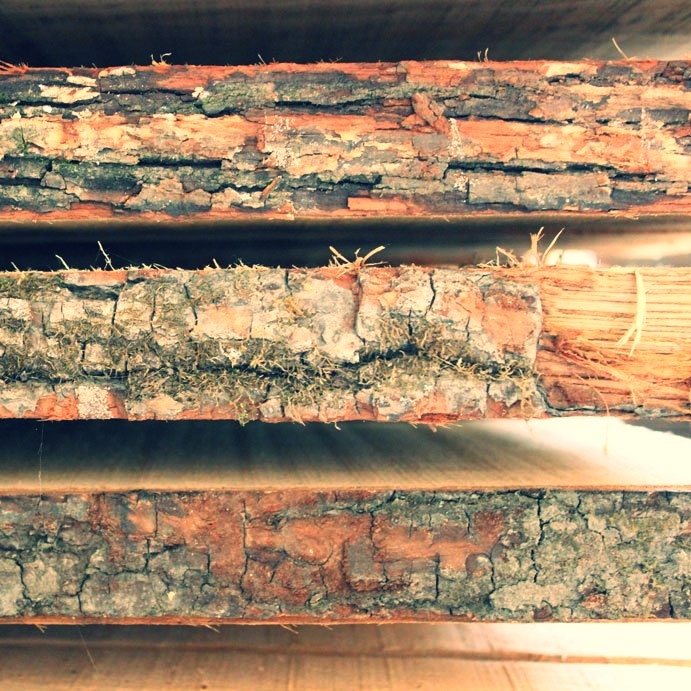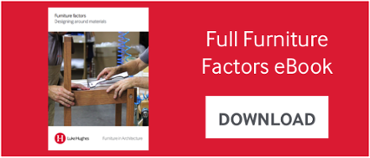Welcome to 'Furniture in Architecture', the Luke Hughes blog.
This post on timber movement will be the first in a series covering technical considerations when designing with materials, which our past clients and collaborators have found invaluable for their custom furniture projects.
Please note: this information is based on the experience of Luke Hughes; it is not intended to be the final word.
Timber movement - the basics
- Solid timber expands and contracts with fluctuations of moisture (more than with variations of temperature).
- An oak table top 1m wide (if made when the moisture content is at 20% will shrink by 2% (or 2 whole centimetres) when the moisture content is reduced to 12%). Hence the problem.
- This process is most pronounced as a new or refurbished building dries out or, once settled, according to the season and the heating provisions; central heating in the winter months will cause severe shrinkage (as will air conditioning).
- Timber furniture in institutional buildings without air conditioning or heavy central heating (such as churches or college halls), will stabilise at between 10-12% moisture content; modern office buildings with air conditioning settle down at 7-9% moisture content.
- As a rough guide, timber stabilises as follows:
Figure 1: Timber stabilisation
| Roof timbers | 15-17% |
| External joinery | 15-17% |
| Suspended floor joists | 16-18% |
| Wood floors | 9-12% |
| Wood floors on under-floor heating | 6% |
| Internal joinery | 8-10% |
| Joinery and furniture in modern offices | 7-9% |
- Typical problems for timber office furniture (prevented by expert design treatment) include the opening of mitred joints, binding of doors, ‘telegraphing’ of solid lips through veneered surfaces, veneer shrinkage cracks, cracks in solid panels.
When should these problems be most expected?
- In new buildings where wet trades have been used (plastering or screeds).
- In the upper part of the building which tends to retain a higher moisture level for longer than the bottom (since damp hot air rises).
- When timber sections are exceptionally wide (such as solid table tops or sizeable boardroom table mouldings) in newly air-conditioned offices.
- When there has been an inadequate measurement of moisture content when selecting timber for a particular job.
- When different types of finishing material (lacquer) are used on a top and its underside (or even different number of coats) or by action which allows moisture to penetrate or escape unevenly from each side (e.g. polythene wrapping on one side only); the less permeable side will shrink (dry out) quicker than the other causing the timber to cup.
What are the solutions?
These problems are best avoided by:
- Using the most appropriate ‘cut’ of the timber by specification or selection.
- Leaving adequate time in manufacture for both selection and extra drying, minimising wooden moving parts (e.g. doors and drawers).
- Keeping solid sections to the smallest, feasible dimension.
- Specifying the best combination of solids and veneers.
- Thorough attention to design details (e.g. hiding likely movement behind shadow gaps or mouldings).
More technical knowledge on timber and more can be found in our new eBook 'Furniture factors: Designing around materials'.
Enjoy the article? Delve deeper into Luke Hughes & Company’s place in the Arts and Crafts tradition with the fascinating new book 'Furniture in Architecture' . Available through Thames & Hudson






